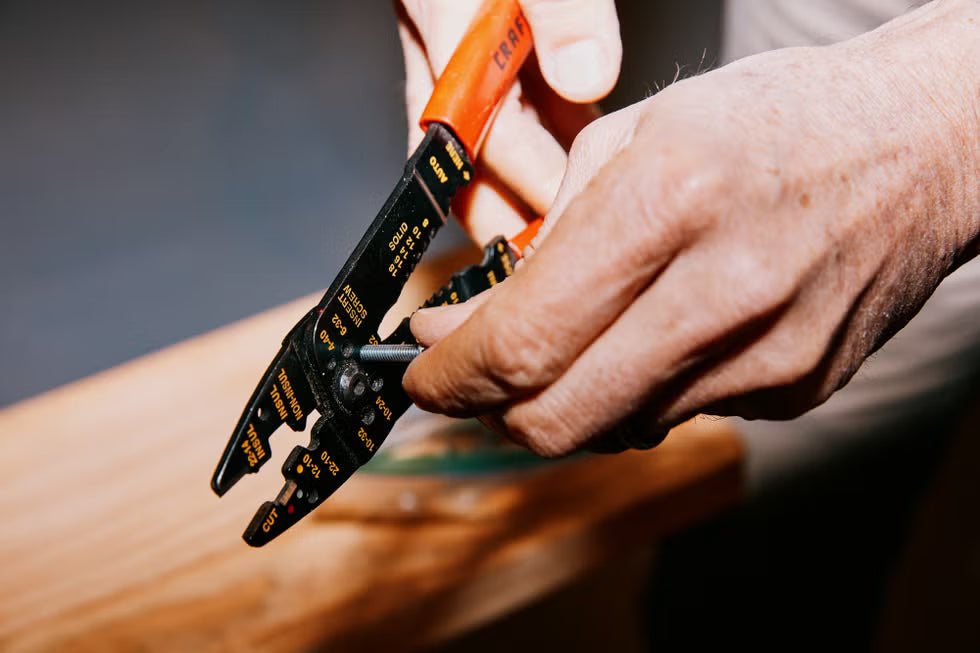




How to Cut a Screw Perfectly: A Beginner’s Guide

Cutting a screw to the perfect length might sound daunting, but it’s a straightforward task that can come in handy in various DIY projects. Whether you're adjusting the length of a screw for a more secure fit or modifying it for a specific application, knowing how to cut a screw properly can save you time, effort, and money. In this guide, we'll walk you through the step-by-step process of cutting a screw and discuss instances when this skill might be necessary.
Why Would You Need to Cut a Screw?
There are several instances when you might need to shorten a screw:
-
Adjusting Length for a Better Fit: If you’re working on a project where a screw is too long and sticks out beyond where it should, cutting it down to size can give your project a cleaner, more professional look.
-
Tight Spaces: In some cases, screws may be too long to fit in a tight or confined space. Shortening them makes them more manageable and safe to use in these situations.
-
Custom Applications: When working on specific projects like cabinetry or electrical installations, you might need screws of unusual lengths. Cutting screws ensures a perfect fit for unique or custom applications.
-
Repurposing Old Screws: If you have screws left over from previous projects, you might not want to waste them. Instead of buying new ones, you can cut them to the required length.

Tools You Will Need
Before you begin, gather these basic tools:
-
Hacksaw or Screw Cutter: A hacksaw is the most common tool for cutting screws. If you are cutting smaller screws or bolts, a screw cutter (available at hardware stores) can work well for precision.
-
Clamps: To hold the screw securely while you cut.
-
File or Grinder: After cutting the screw, you’ll want to smooth the edges to avoid any sharp burrs that could cause injury or damage.
-
Measuring Tape or Ruler: To measure the exact length you need.
-
Protective Gear (Optional but recommended): Safety glasses and gloves will protect your eyes and hands from debris when cutting.

Step-by-Step Process for Cutting a Screw
-
Measure the Length:
-
Using a ruler or measuring tape, mark the exact length you need to cut the screw down to. Be sure to account for any threading that may still need to engage fully in the material or part you're working with.
-
Use a marker or masking tape to highlight the cut area. This ensures you don’t make any mistakes.
-
Secure the Screw:
-
Use clamps to firmly hold the screw in place. You want the screw to be steady while you cut to avoid any accidents or uneven cuts.
-
Cut the Screw:
-
Using a Hacksaw: Align the hacksaw blade with the marked line. Begin slowly and carefully cutting through the screw. Apply gentle pressure—don’t force the saw. Let the blade do the work.
-
Using a Screw Cutter: If you’re using a screw cutter, place the screw inside the cutter and tighten it. The cutter will do the work by shearing off the excess length.
-
Smooth the Edges:
-
After the screw has been cut, the edges will likely be rough or jagged. This could potentially cause injury or make it difficult to thread the screw properly. To fix this, use a file or grinder to smooth the cut end of the screw until it’s flush and safe to handle.
-
Clean Up:
-
Remove any debris or metal shavings that may have accumulated during the cutting process. This ensures that the screw will function properly in its intended application.
Tips for Cutting Screws Perfectly
-
Choose the Right Tools: When cutting thick or heavy-duty screws, a hacksaw will provide the best results. For smaller screws or bolts, a screw cutter is more precise and easier to handle.
-
Work Slowly: Cutting a screw is not a race. Take your time to ensure a clean, straight cut.
-
Check for Sharp Edges: After cutting, always inspect the screw to ensure that there are no sharp edges or burrs that could damage materials or cause injury.
-
Cutting Multiple Screws: If you have several screws to cut, consider clamping them all together to make the process more efficient.
Cutting a screw is an invaluable skill for anyone engaged in DIY or home improvement projects. It allows you to tailor the length of screws to your exact needs, whether you're adjusting for a better fit, making the screw more manageable in tight spaces, or repurposing old screws. By following the steps outlined above and taking proper safety precautions, even beginners can successfully cut screws with ease.
Now, equipped with the knowledge of how and when to cut screws, you can tackle your next project with confidence. Whether you’re assembling furniture, hanging a shelf, or installing a fixture, the ability to modify screws to your specifications will give your work a more polished and professional finish.
